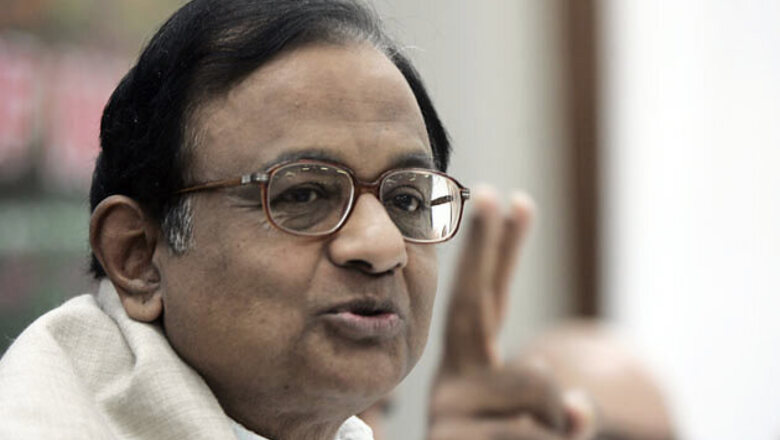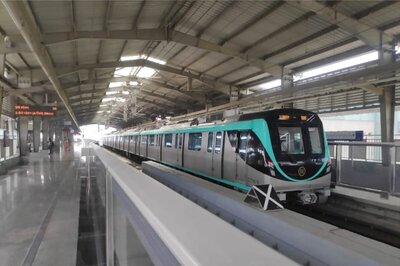
views
Union Home Minister P Chidambaram
Budget Allocation
Rs. 3,283 crore — a 55 per cent increase from Rs. 1,810 crore in 2009-10.
Big Idea
Institutional reforms in areas affected by Naxals; taking on terror on a larger scale. Neutralising the twin threats of Naxalism and jihadists while improving access to remote and impoverished areas.
Long-term Goals
Reduce the area under domination by Naxals. Counter terror that is raising its head again
It's not often in India that politicians praise their rivals. So when Gujarat chief minister Narendra Modi complimented Home Minister P. Chidambaram for his handling of internal security, it came as a surprise to most.
At a meeting of chief ministers on internal security in the first week of February, Modi said that since Chidambaram took over, states were getting positive and quick response from the central government on terrorism that had helped foil several potential incidents.
Just over a week later terrorists struck the German Bakery near the Osho Ashram at Koregaon Parka in Pune. Frequented by foreigners, the blast killed 11 and wounded over 40 people. A day later Maoists surrounded and massacred 20 jawans at a camp of Eastern Frontier Rifles at Silda in West Bengal. In yet another incident, on February 20, just days ahead of the scheduled Indo-Pak secretary-level talks, suspected Taliban terrorists beheaded Jaspal Singh, a Sikh, in Khyber Agency in the Federally Administered Tribal Areas (FATA) region in Pakistan.
A year-long lull has been broken; fear is making the public jumpy and Indo-Pak talks will begin in the shadow of terror once again.
In 2008, there were six major attacks that bore the signature of cross-border terrorism and killed 470 people. At the Intelligence Bureau Endowment Lecture earlier this month, Chidambaram was asked how the country had managed to remain incident free for 14 months. "Honestly, it is because of dame luck that there has been no terror attack," he replied with surprising candour.
Taking Charge
The massive terrorist attack on Mumbai in November 2008 shook the country and the then Home Minister Shivraj Patil was fired. Prime Minister Manmohan Singh handed over the charge to Chidambaram, arguably one of the most experienced ministers in his cabinet.
The Congress leader from Sivaganga in Tamil Nadu had already made a mark in the finance ministry as a no-nonsense administrator, for his handling of the country's finances and a penchant for peppering his Budget speeches with verses from the Tamil epic Thirukkural.
Under Chidambaram's watch, the home ministry appears aggressive and purposeful. Chidambaram has actively engaged with the public and the states and has initiated an overhaul of the policing and intelligence apparatus of the country. That is why there does not seem to be any perceptible anger against him even after a sudden spurt of incidents.
Since he took over, Chidambaram's two central preoccupations have been cross-border terrorism and home-grown Naxalite violence unleashed from the jungles of eastern, central and southern India.
The minister has set up a specially trained commando battalion to take on the Naxals. In addition, he set up the National Investigation Agency (NIA) and the National Counter Terrorism Centre (NCTC) to counter terror. The National Security Guard has also been allocated hubs in major cities to ensure that the crack commandoes can respond faster to attacks like the one on Mumbai.
Chidambaram envisions ground operations to revolve around the NCTC. This centre will deal with cross-border terrorism and Naxalism. The Multi-Agency Centre or MAC, an information aggregator anchored by the Intelligence Bureau, will be at the core of the NCTC.
The NCTC would also gather information through the NATGRID, which would collate information such as Internet usage, bill payment and other information available in police records. The project, which is expected to be cleared soon by the Cabinet Committee on Security, will help in tracing movements of suspects and money trails. Last year, Chidambaram hired Captain Raghu Raman, a former armyman and head of Mahindra Special Services Group, as chief executive officer of the project.
Once NATGRID goes live — it is expected to be established in two years — it would provide designated security agencies access to multiple databases, including bank account details, credit card transactions, visa and immigration records, in one location. It will eliminate the need for agencies to depend on each other for information sharing, which often used to be ineffectual because of turf consciousness and ego hassles. The NATGRID has been established on the lines of the Federal Bureau of Investigation in the US.
"The NATGRID does not seek any new information. It will collate information that is already available with the government. For instance, today the agencies have to seek information from several agencies. Instead of this there will be one common database from which the information may be made easily available," said an officer associated with the project on condition of anonymity.
Security expert Ajai Sahni, however, says that unless states co-operate in enhancing capacity, the creation of new institutions by the Centre would not yield the desired benefit. According to Sahni, merely taking a leaf out of the American system that evolved after 9/11 would not be sufficient.
"The FBI's annual budget stands at $7.1 billion — to match this for India's population we would need to envisage an expenditure four times as much. The Centre's outlay under 'policing' currently amounts to just $3 billion," he says.
Fractures in the Plan
Sahni is right. There is no point in Chidambaram only creating new institutions on the lines of what the US has; you have to strengthen state police. India's police to population ratio stands at 145 : 100,000, which is a fraction of the required strength.
The crisis in the police leadership is even more acute with the deficit in the Indian Police Service cadre pegged at 17 per cent. States that have the most urgent security requirements are worst placed in terms of capacity. Orissa, for instance, has a sanctioned strength of 207 officers but has only 97. What is worse is that the Intelligence Bureau has only around 3,000 officers actually available on the field to collect intelligence, though its strength is said to be about 25,000.
General VP Mallik, former Chief of Army Staff, says Chidambaram had made the right moves to begin with but it was too early to judge. "I think there is political consensus on how to tackle Jihadi terror. It [consensus] evades us when it comes to the Naxalites."
There were 1,591 Naxal-related attacks in 2008 that resulted in the death of 721 people. The highly organised Maoist guerillas have targeted with impunity police stations and institutions symbolising government.
In April 2006, after an assessment by the home ministry, Prime Minister Manmohan Singh had said that over 160 districts in the country were affected by Naxals. "It would not be an exaggeration to say that the problem of Naxalism is the single biggest internal security challenge ever faced by our country," he said, adding that issue needs to be treated as a high priority concern.
To tackle Naxals effectively, the use of force has to be complemented with developmental schemes for the affected districts as well. As Forbes India had documented in a previous issue, intelligent use of development schemes such as NREGS helped rid Balaghat district of Madhya Pradesh of the menace. One of the key strategies that helped in the fight against Naxalism was the building of a network of roads in inaccessible forested hills that helped movement of people, which, in turn, helped information gathering. It also helped the police to respond and reach remote locations faster, restricting the movement of Naxals who depend on forest cover and terrain for their cuts and thrusts.
The government has now rolled out a Rs. 7,300 crore special roads package for the Naxal-affected areas.
"The problem in these places is that we have no access to information. There are districts where intelligence personnel are simply unable to operate. So how do you gather information?" asks an officer who handles anti-Naxal operations at the Centre. To enable smooth operations in Naxal areas where the government is building roads, it sends in para-military troops to counter them. In Chattisgarh, there are highway projects that are being constructed by the police as contractors have fled the area.
"Even a super Chidambaram would find it difficult to contain these threats unless the states begin to fulfil their responsibility," says former special secretary in the home ministry, ML Kumawat. According to him, the home ministry filled up over 2 lakh vacancies in the past five years, half of which were supposed to be filled by the state governments in their police forces.
The officer from the anti-Naxal team quoted earlier says that the morale of the forces have improved since Chidambaram took charge. "We have carried out more operations in the last one year compared with those conducted in the last five. There is a clear message from the top and that does instill confidence among the jawans."
Faster response from the central ministry, which Gujarat chief minister Modi had alluded to, has also helped police forces from different states to exchange information and carry out joint operations under the leadership of the para-military forces.
The aggressive stance of the Centre seems to have had its impact. When this story was going to print, the Maoists had made an offer for ceasefire. But the Centre made it clear that it will not accept any pre-conditions for talks with "ifs and buts" and asked the Naxals to come out with a simple statement saying they will shun violence.
Maoist leader Kishenji, in response to Chidambaram's statement, has asked the minister to contact him on his mobile phone. Clearly, the battle has only begun.

















Comments
0 comment